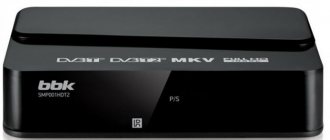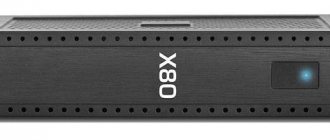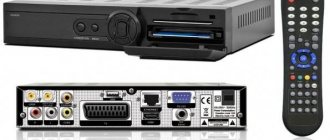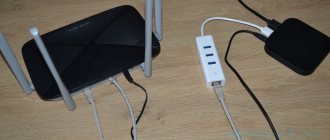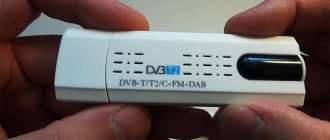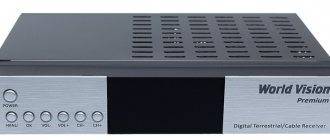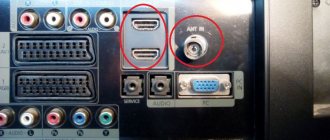Instructions for TV tuner GLOBO GL100 - free instructions in Russian, forum
If the instructions are not complete or you need additional information on this device, if you need additional files: drivers, additional user manual (manufacturers often make several different technical help documents and manuals for each product), the latest firmware version, then you can administrators or to all users of the site, everyone will try to quickly respond to your request and help as quickly as possible.
Your device has the following characteristics: Type: digital TV tuner, Version: external, Connection type: standalone, capture: no, FM tuner: no, HD support: 720p, see the next tab for full specifications.
| GLOBO_gl100_0.pdf | User guide |
| GLOBO_gl100_1.pdf | Download certificate of conformity |
| Download Report broken link |
Useful files and software
For many products, various additional files may be needed to work with GLOBO GL100: drivers, patches, updates, installation programs, a list of error codes, an electronic circuit or photo. You can download these files online for a specific GLOBO GL100 model or add your own for free downloading by other visitors.
| Drivers | Found (0) |
| Electronic circuit | Found (0) |
| Photo | Found (0) |
| Installation diagram | Found (0) |
| Datasheet | Found (0) |
Instructions for similar TV tuners
If you have not found files and documents for this model, you can look at the instructions for similar products and models, as they often differ in slight changes and are complementary.
Reviews of GLOBO GL100
Be sure to write a few words about the product you purchased so that everyone can read your review or question. Be active so that as many people as possible can find out the opinions of real people who have already used the GLOBO GL100.
sdadsasd
Gugu
Very good console
awwwa
The green LED is on, on the ASH display, the set-top box does not respond to the remote control
Very convenient attachment
Eee
Characteristics of GLOBO GL100
Text describing the characteristics of the device.
| General characteristics | |
| Type | digital TV tuner |
| Execution | external |
| Connection type | autonomous |
| capture | No |
| FM tuner | No |
| Video characteristics | |
| HD support | 720p |
| Digital standards | DVB-T2 |
| Inputs and outputs | |
| Exits | audio, HDMI, composite |
| FireWire | No |
| Other features and functionality | |
| Teletext | There is |
| Recording timer | There is |
| Delayed viewing mode | There is |
| Additional Information | |
| Dimensions (WxHxD) | 165×35x90 mm |
| Weight | 500 g |
| Peculiarities | USB port; media player mp3/mkv/wma/avi/jpeg/bmp |
The auto search found nothing, and the set-top box says “No services”
If the auto search did not find anything, and the set-top box writes “No services”. Or the channels stopped showing, and instead of them there is also “No services” - the problem is a bad signal.
“No services” is a sure sign of a weak signal
You need to do a manual search on the frequencies on which your signal is transmitted. We take the frequencies here. The problem is that auto search with a weak signal simply does not find anything, while manual search will show you the strength of the transmitted signal, even if it is very weak.
Example from life
I already wrote that I caught the first number on simple “horns” in the city center, on the second floor and there are few buildings around. The signal quality is excellent. Intensity 80%, quality 60-80%
The higher the quality and intensity, the better
But when I moved to another area of the city, to an apartment on the 9th floor, a house in a low area and many other houses around – these horns did not catch anything. More precisely, the auto search did not catch anything. I was very surprised (the tower is located nearby), I entered the frequency manually through a manual search (which I advise you to do), and it turned out that the signal level was 10-15%! This is clearly not enough for reliable reception of digital TV.
Thursday, October 1, 2015
Testing the Globo GL 100 set-top box and setting up digital terrestrial TV
- high-quality metal case with wide slots for cooling and securely fixed outlets for plugs;
- dual-band VHF/UHF receiver;
- presence of a remote control with wide buttons;
- support for all image formats from 576i to Full HD (1980*1080, 50 Hz);
- the presence of a composite cable (“tulips”) and an HDMI cable included;
- adequate console menu;
- presence of LED screen;
- preferably a certified receiver in the Russian Federation;
- the presence of a USB port with support for different media standards in words, not on paper.
In the end, my choice fell on the Globo GL 100. The production is carried out by a Russian company registered in Kaliningrad, but like everything else, it orders set-top boxes in China. Next time I update the post, I will definitely indicate the name of the factory. I purchased the set-top box from M.video without a discount because I was in a hurry. When purchasing on the website and paying with a bank card, you can get a 5% discount, but if you delay the purchase until the afternoon, you can most likely pick up the goods the next day, although there are more than enough boxes with attachments on the counter - that’s just how the ordering system works. Their bonus system only works when you present a card, but I lost mine somewhere and am just accumulating points????
The set-top box is positioned as the only one that has passed RTRS certification. Naturally, this is just a marketing ploy, because not a word is said about it on the manufacturer’s website or on the RTRS website. There seems to be support for Dolby Digital Plus, but video with the AC3 codec on flash drives has not yet been tested - a typical situation for all Chinese assemblies.
The kit contains everything you need: set-top box, plastic antenna Z1 5V (VHF), composite cable, HDMI cable, remote control, batteries, brief instructions, warranty card. The instructions are quite brief and suitable for those initiated into the topic. Not a word about the console menu.
Many people ask on the Internet: what is LCN? This is just arranging the channels in the order specified by the operator. Select no if you want to customize the order yourself later.
Attention! When the antenna is active, do not turn on the external power from the set-top box (off) and turn on the power directly from the outlet. As my experience has shown, the set-top box and the active antenna do not work in 5V/12V modes, and even more so when the cable from the antenna is plugged only into the set-top box.
Signal level: 49-52%, and quality 100% This can be found out before searching for channels or by pressing the US button on the remote control. In my case, the antenna hangs on a wooden stick that serves as a mast at the height of the roof of a one-story house. An antenna in the form of an array powered by the network, i.e. active. As experience has shown, this was the best result. If you hide the antenna in the attic, the signal strength drops to 12-35%. When lowering the antenna to the ceiling height, the signal is 12-15%. Changing the direction of the antenna to the cardinal points and around the house does not change the result.
Having replaced a failed signal amplifier with a similar one for 150 rubles, I achieved a stable signal of around 51%, but I still can only receive the second mutiplex (RTRS-2). There are no complaints about the picture quality and additional services.
In the attic I found a classic passive antenna Delta N311-01 at 5-15 km from the signal source (without amplification). Such antennas have been produced by JSC NPP OST from St. Petersburg for almost 20 years. Haven't tested it yet. I am sure that without amplification it will not make any special weather, especially since it must be strictly directed towards the signal. By the way, it is much wider (83 cm) and more reliable in terms of metal.
Pay attention to the quality of the cable (coaxial with a resistance of 75 Ohms; the old Soviet one is not suitable due to strong attenuation) and the type of antenna (amplification power in dB).
Indeed: the picture is perfect (better than on home cable TV), there are no complaints about the sound, EPG works everywhere and in sufficient detail, which is often not the case in cable TV (the photograph does not convey the clarity of the picture). The set-top box automatically received the date and local time, taking into account the specified settings in the menu (Russia, regional zone).
It takes 10-15 seconds for the set-top box to turn on from the standby state and for the image of the broadcast channel to appear. The picture appears immediately with sound. When switching channels, changing the stream takes only 1-2 seconds.
You can find out where the nearest transmitter is located, how many multiplexes it offers and frequencies on the official RTRS website. There you can select Google Maps or Yandex Maps, where all points of presence are marked. There is a version for mobile devices. In addition, you can call the hotline 8-800-220-20-02, which I did not use. In the Bryansk region, all areas are evenly covered. I myself have repeatedly been to Novozybkovsky, Zlynkovsky and Klimovsky and other areas, where I saw fresh masts. It is clear why the state needs this: a single, controlled information space, especially in border areas, and a focus on the average person who is not used to paying for something. It’s funny, but the source of the signal is the same satellite, and then the received signal is simply rebroadcast! It would have been easier to provide subsidies to satellite operators or launch more domestic satellites in order to reduce the cost of broadcasting TV channels, given the vastness of the country. Instead, they chose a rather expensive broadcast method.
Attention! Frequencies differ not only from region, but also from location, so it’s better to write them out in advance if you go to a dacha where mobile Internet access is poor.
The Globo GL1-100 console itself is neither bad nor very good. My rating: 3.5 points on a five-point scale. The biggest drawback is the lack of support for various codecs for the media player. It performs its basic duties well, but the downside is that automatic tuning takes too long across the entire spectrum (3-5 minutes), so I recommend searching for channels by frequency manually. The set-top box supports the analog range, but it won’t let you watch analog TV channels and won’t even find them.
To summarize, I would like to note that digital terrestrial TV is inferior in the number of channels to cable and satellite TV + has fewer additional services (video on demand, satellite Internet). By and large, if you have a new TV, especially a Smart TV, I would advise purchasing a satellite TV set. Digital terrestrial TV may well broadcast video in 1080i quality (Full HD), but these TV channels are not available in the multiplex (First HD, Russia HD, NTV HD, etc.). Given that Japan will begin rolling out 8K broadcasting in 2021, it becomes clear who is ahead of the rest of the planet.
If you have an old TV, then it is better to purchase a digital terrestrial TV set-top box, because satellite operators are gradually getting rid of their fleet of old set-top boxes.
Digital terrestrial TV is ideal for summer residents who do not live in their house all year round, and for whom there is no point in becoming satellite television subscribers. Potential subscribers include low-income families, residents of the private sector and villagers with low incomes. Pensioners will like the set-top box due to its relatively low price, although setting it up on their own will be somewhat difficult for many.
They promise to someday add local TV to broadcasting, but this will take years due to the high cost of renting frequencies. At best, local state channels will appear in a few years.
Source
How to set up the antenna itself
But if the intensity is high, but the quality is low, then it’s more interesting. You will need to adjust the antenna. That is, in fact, to turn it in different directions, in the literal sense. The digital TV signal is very sensitive to obstacles such as reinforced concrete walls or plastic window frames. The good news is that the “digital” is excellent even from the reflected signal. The only question is to find a position for the antenna at which everything will work well.
My antenna with amplifier Cadena General Satellite UVR-AV1000N MF+UHF
I did just that, bought an antenna with an amplifier, and connected it to the set-top box. Without an amplifier, of course, the signal level is the same as for horns. With the amplifier, the intensity increased to 80%, but the quality began to jump at the level of 20-30%, depending on where the antenna was pointed. And some pictures and friezes even began to pop up:
Frequent “freezes” are a sure sign of a bad signal or a change in atmospheric conditions
As a result, inside the room I managed to get a maximum of 35% quality with the antenna at arm's length. I already decided that that’s it, I won’t have “digits” and I bought a set-top box with an antenna in vain.
But then I placed the antenna on the windowsill. And I started setting it up there. Amazingly, I achieved 50-60% quality at the first multiplex, and 35-45% at the second! Only by changing the position of the round antenna. (The horns catch the meter range, and the circle – the decimeter range, so we adjust the circle ).
The horns are not needed at all, but I had to turn the circle for a very long time until I found the right position
At the same time, I found a position for the antenna in which both multiplexes were picked up. Since they are transmitted by different towers at different frequencies, they can be received differently. So, when you turn the antenna, check the channel from one multiplex and the channel from another. Optimally – First and Muz TV – switching is convenient)
Well, now everything is fine, and 50-60% at the first multiplex
